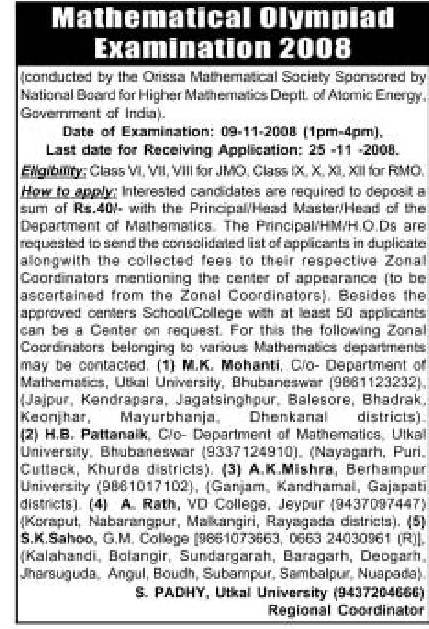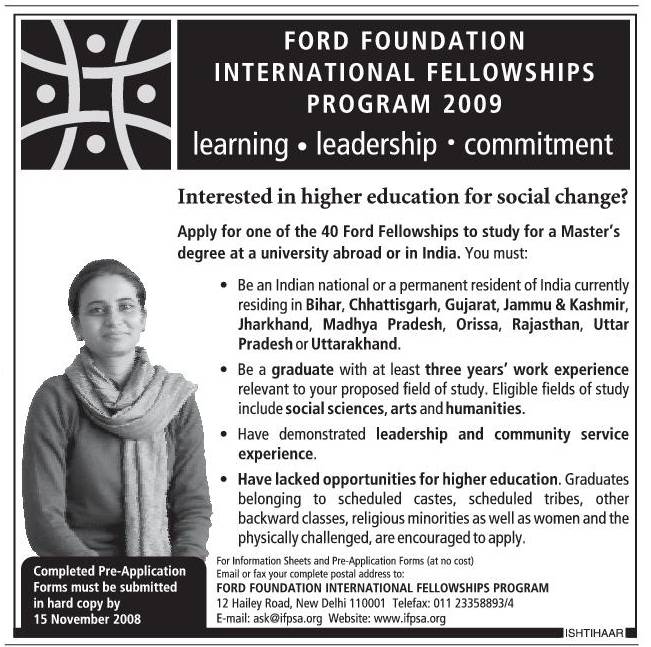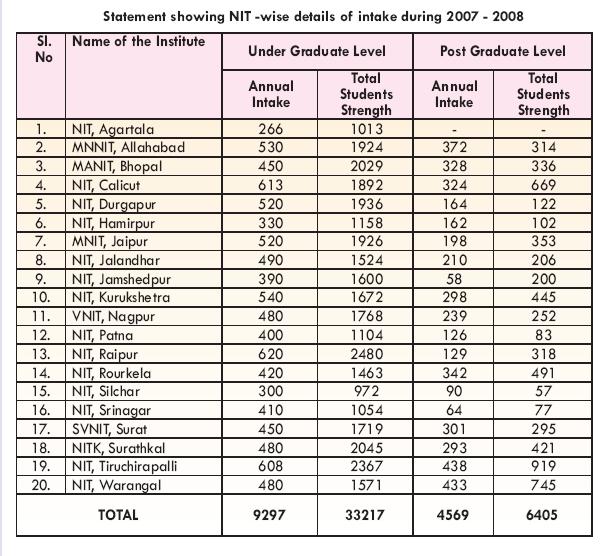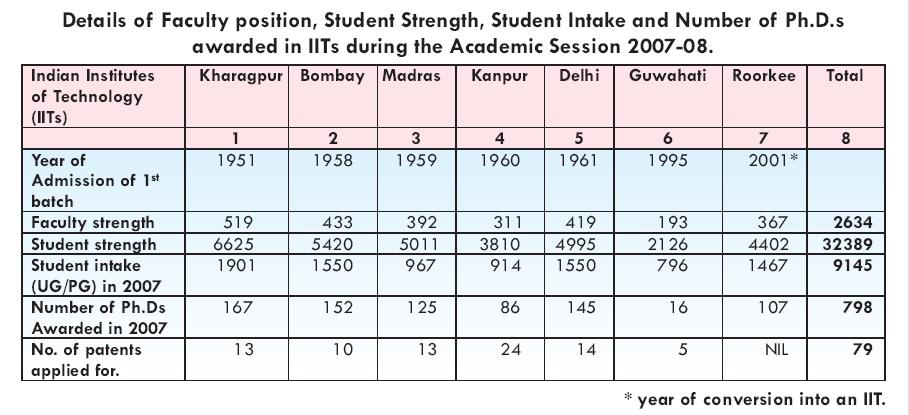Following are excerpts from http://164.100.24.209/newls/textofdebatedetail.aspx?sdate=10/21/2008.
INDIAN MARITIME UNIVERSITY BILL
1729 hours
THE MINISTER OF SHIPPING, ROAD TRANSPORT AND HIGHWAYS (SHRI T.R. BAALU): Sir, I beg to move:
“That the Bill to establish and incorporate a teaching and affiliating University at the national level to facilitate and promote maritime studies and research and to achieve excellence in areas of marine science and technology, marine environment and other related fields, and to provide for matters connected therewith or incidental thereto, be taken into consideration.”
India has had a long maritime tradition and is the 20th largest maritime country in the world. The single largest contributing factor to this glorious tradition is the presence of a strong, dedicated, efficient and reliable reservoir of officer and ratings of the Merchant Navy in India. Presently, 27,000 officers and 55,000 ratings are employed on Indian and foreign flag vessels. The ever-increasing demand of Indian seafarers worldwide is a testament of the quality of education and training received in India. However, of late, India has been facing a stiff challenge to her position in this regard from countries like Phillippines, China and Bangladesh. Hence, there is a need to further upgrade our training capacity and capabilities so that India stays ahead of the other nations in this sector and is able to meet the projected global shortage of 27,000 officers by the year 2015. There is also a need to augment the share of India in the world maritime manpower fleet from the present level of around 6 per cent to at least 20 per cent.
(d3/1730/rbn/sb)
Further, the 29 per cent share of Organisation for Economic Cooperation and Development countries is dwindling rapidly due to lack of interest of their youth in this career and this presents an opportunity that we should exploit to our advantage. With the growth of the maritime sector in the country such as the port, shipping, ship-building, inland water transport and offshore exploration sectors, the need for development of manpower in new disciplines such as maritime security, maritime law, oceanography, marine insurance, ocean engineering, ship-building and other relevant areas has become imperative.
To meet the requirement of trained manpower in the merchant maritime fleet under the Indian flag as also foreign flag vessels, the Directorate General of Shipping, Department of Shipping imparts pre-sea and post-sea training in engineering and in the nautical discipline through the Lal Bahadur Shastri College of Advanced Maritime Studies and Research, Mumbai, Training Ship Chanakya, Navi Mumbai and the Marine Engineering and Research Institute, Kolkata and Mumbai. For further strengthening the institutional framework for imparting maritime training in India, the Government decided to establish a Society namely the Indian Institute of Maritime Studies on 6th June, 2002 placing these four Government-run Maritime Institutions within the domain of this Society. The Government also set up the National Institute of Port Management now renamed as National Maritime Academy, Chennai and Indian Institute of Port Management, Kolkata as registered Societies for capacity building of personnel of port and shipping industry.
In order to encourage private sector participation in maritime training, the Government of India announced liberalised guidelines in 1997 and as a result, around 125 training institutes have come up in the Government and in the private sector, which impart both pre-sea and post-sea training. The Directorate General of Shipping, Mumbai, recognises the private institutes.
It has been seen that the present maritime training set up in the country does not ensure uniform standards and is inadequate in terms of its span of academic coverage, and thus it cannot cope with the future growth opportunities. Hence, there is a need to strengthen its training infrastructure including setting up a university immediately.
The Committee on Maritime Education and Training set up by the Government in 1991, had recommended the establishment of an autonomous body under an Act of Parliament, to be designated as the Indian Maritime University, to manage, control, supervise, direct and monitor the maritime training institutions, currently running under the Government control. An Expert Committee was constituted by this Ministry, which inter alia included representatives of the University Grants Commission, to look into the feasibility of the formation of an Indian Maritime University by an Act of Parliament under the aegis of this Ministry, which also strongly recommended the formation of Indian Maritime University. The Expenditure Reforms Commission in its Ninth Report had also recommended that the IIMS should be given the status of a deemed university or of an Indian Institute of Technology and should become totally autonomous.
Formation of the IMU will facilitate and promote maritime studies, research and extension work with focus on emerging areas of studies including marine science and technology, marine environment, socio-economic, legal and other related fields, and also to achieve excellence in these and connected fields. It will promote advanced knowledge by providing institutional and research facilities in such branches of learning as it may deem fit, make provisions for integrated courses in science and other key areas of marine technology and allied disciplines. As we have a sizeable number of private institutions imparting maritime education and training, the University will standardise the quality of such education and training through affiliation and academic supervision.
The Government had introduced the Indian Maritime University Bill, 2007 on 13th March, 2007 in the Lok Sabha. The Bill was referred to the Parliamentary Standing Committee on Transport, Tourism and Culture on 19th March, 2007 for examination and report. The Committee examined the Bill and presented its 132nd Report on IMU Bill, 2007, on 17th April, 2008. The Government has considered the Report of the hon. Committee and has accepted 24 of their recommendations.
One of the recommendations of the Committee is that there must be one Maritime University each in Mumbai, Kolkata, Chennai, Visakhapatnam and Kochi. The Government is of the view that, to begin with, establishment of several Universities at the same time would create difficulties. It would require far greater skilled, human and financial resources than are available and would carry the danger of dilution of input
It would also deny the investment of learning and experience gained from setting up the first University into subsequent Universities. It would also be administratively premature, as the demand, location and jurisdiction issues would first need to be adequately studied to enable rational investment decisions. Further, much of the spadework for establishing the Indian Maritime University at Chennai has since been done. Based on the experience gained, the Government will review, at an appropriate stage, the requirement of more Universities and a decision would be taken keeping in view the enabling factors like availability of land, resources, presence of maritime institutes in the region, etc.
We, therefore, propose to establish the Indian Maritime University in Chennai with campuses in Kolkata, Mumbai and Visakhapatnam by an Act of Parliament.
The existing seven Government and Government-aided maritime training and research institutes, viz. Marine Engineering and Research Institute (MERI), Kolkata, Marine Engineering and Research Institute (MERI), Mumbai, Lal Bahadur Shastri College of Advanced Maritime Studies and Research, Mumbai, T.S. Chanakya, Navi Mumbai, National Maritime Academy (NMA), Chennai, Indian Institute of Port Management (IIPM), Kolkata and the National Ship Design and Research Centre (NSDRC), Visakhapatnam will be merged with the IMU. The employees of the four training institutes under IIMS who will stand transferred to the IMU will have the option to continue on deemed deputation in the IMU on Government terms and conditions and also continue to retain/to be allotted Government residential accommodation on turn and avail of the Central Government Health Scheme (CGHS) facilities till their retirement. The employees of the NMA, IIPM and NSDRC shall have the option to continue in the IMU on the existing terms and conditions of respective institutes, till their retirement. All the employees shall also have the alternative option to join the IMU as per the service conditions of the University.
Sir, with these words, I now move the Indian Maritime University Bill, 2007 for consideration.
…
1834 hours
SHRI B. MAHTAB (CUTTACK): At the outset, I should say that I welcome the Bill. The Standing Committee has already discussed this and has recommended it to the Government for consideration. I hope that the Minister will reply — while giving his explanation — as to why certain recommendations have not been adhered to. In course of time we will also get the Action Taken Report that the Committee had submitted to the Government. Hence, we will know why certain recommendations have not been accepted. …
There is a need to have a regulator who could look after the standards. The Indian Maritime University in Chennai will have campuses, as has been mentioned in the Bill, in Mumbai, Kolkata and in Vizag. Orissa has been left in between.
(q3/1840/kmr/mm)
We have an Academy at Paradip for the last 25 years. You can extend a campus to Paradip. Our contention would be, as has been mentioned by my previous speakers, that the attempt should be to build up new universities in this aspect. This is a forward-looking Bill. A Central University may be a light post, a guideline. But attempt should be made by the Government to set up more such universities so that the trainers can also be trained and better faculty members can come in from outside and train our people. Autonomous institutions also should come up.
…
1843 hours
SHRI KHARABELA SWAIN (BALASORE): Mr. Chairman, Sir, I appreciate the requirement of setting up of a maritime training set up to develop a strong, dedicated, efficient and reliable reservoir of officers, . I also appreciate the need to bring in maritime technology, environment, legal and other related issues and to facilitate maritime studies and research. …
Lastly, I will appeal to the hon. Minister. Orissa is having a vast coastline; it is having a long maritime tradition. People went right up to Indonesia, Cambodia, and such other countries. So, in future, when he goes in for more and more campuses, will he consider opening up of another campus in Orissa? Thank you very much.
October 23rd, 2008
Following is an excerpt from a report in thaindian.com.
A new Indian Institute of Technology (IIT) coming up in Hyderabad will see close Japanese partnership at the post-graduate level in key areas, including setting up of a Japanese-style business management course, and increased funding for purchase of technical and research equipment to make it into an institution of excellence.A working group that has submitted its report for establishing such an institution with Japanese-Indian collaboration said environment and energy, digital communication, design and manufacturing, nano-technology and nano-science, and civil engineering would be fields that would given a fresh thrust.
Former prime minister Shinzo Abe and Prime Minister Manmohan Singh had set up a working group in August last year to zero in on a new IIT that would see Japanese assistance.
… In addition courses on Japanese-style business management, a key strength of the country’s industry, will also be introduced. While faculty and student exchanges will happen regularly, the premier institute will also set up a Japanese language course for students that could help them find jobs in Japan in the future.
… "Collaboration on the new IIT will be implemented with a long term perspective in mind based on human exchange an joint work. This will be viewed possibly as a ten-year programme,” said a senior official.
October 22nd, 2008
In the following figure the red dots indicate where the current universities in Orissa are, including the ones that have been announced, such as the proposed central university in Koraput. As the map illustrates, all the existing and planned universities are in the periphery of the state and the interior districts lack university level higher education opportunities. This needs to be corrected by establishing state universities at the blue marked points: Bhawanipatna, Phulbani, Angul and Keonjhar. In addition, the Rourkela metropolitan area, the second largest metropolitan area in Orissa, needs a regular university. Neither BPUT nor NIT Rourkela serve the purpose. Thus a regular university needs to be established in Rourkela.
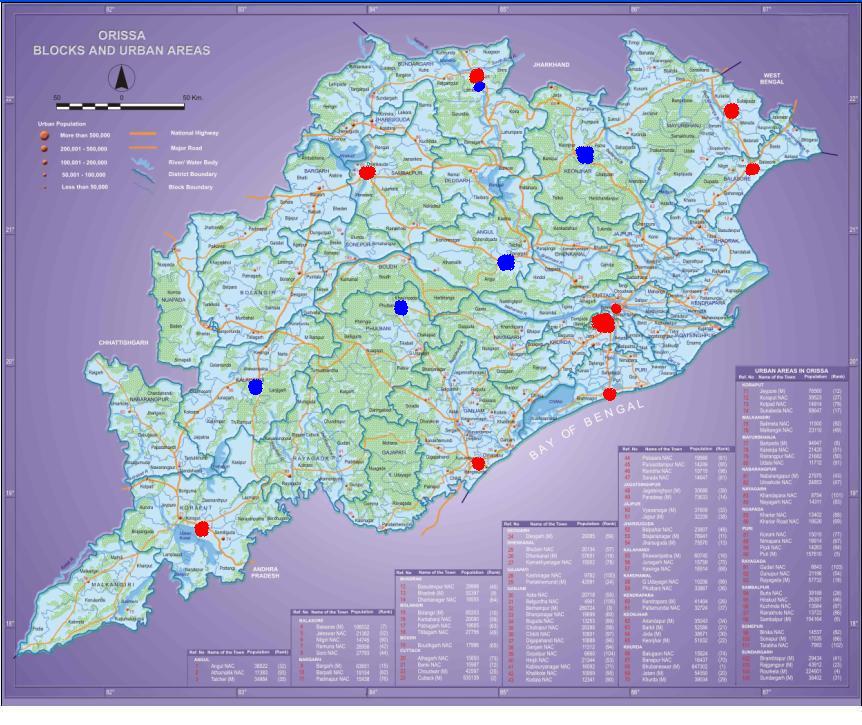
October 20th, 2008
Following is an excerpt from the news group http://in.groups.yahoo.com/group/designindia/.
Dear Friends,
We are happy to inform you that we are in process of setting up NID Campus in Bhopal, Madhya Pradesh from next academic year 2009-2010 wherein we plan to start Under Graduate Programmes.
We are looking for Design Educators and Design Managers who are interested in joining hands with NID in this endeavour of institution building, as envisaged in the National Design Policy announced by the Government of India in February 20082007. If this interests you, we would be happy to arrange a meeting with you at NID Heritage Campus, Ahmedabad, R & D Campus, Bangalore or NID – Delhi Centre.
Looking forward to hearing from you!
Best wishes,
Pradyumna Vyas
Activity Chairperson – Education
National Institute of Design
Ahmedabad – 380 007
Mob: 098985 00033
In Feb 08 200, the Union Cabinet approved the establishment of four new National Institutes of Design. See http://pib.nic.in/release/release.asp?relid=24647. As per the news items cited in https://www.orissalinks.com/archives/305 one of them was to be in Orissa. I wonder what happened to that.
As per https://www.orissalinks.com/archives/1241, the Orissa government recently (end of July 2008) recommunicated to Delhi about its interest to set up an NID in Orissa.
October 20th, 2008
Following is the recruitment criteria that is used at Orissa state Universities (except BPUT and OUAT) and perhaps in many other state universities across India.
(a) The Selection Committee shall consists of :-
(i) The Vice Chancellor. (ii) The DHE, (iii) 3 experts selected by the Vice Chancellor from a panel of six names prepared by the syndicate (iv) an expert nominated by the Chancellor in case of appoint to the post of Professor.
The quorum at a meeting of the Selection Committee shall be four of whom at least two shall be experts including the expert nominated by the Chancellor, if any.
(b) Evaluation of candidates
Evaluation of candidates for different teaching posts in the University (Professor, Reader, Lecturer)
1. GENERAL CAREER (30 MARKS)
(a) 1st Class 2nd Class 3rd Class
(i) HSC 4 2 1
(ii) Intermediate (+2) 4 2 1
(iii) Degree / Honours 8 4 1.5 (Pass)
(iv) Distinction 2 2 2 (Pass)
(v) P.G. Degree
75 – 100 % 12
65 – 74 % 9
55 – 64 % 6
45 – 54 % 4
(b) Marks for matriculation and Intermediate may be re-distributed as follows in the case of candidates passing Higher Secondary / Pre-University / Pre-Professional etc. in cases where Higher Secondary Examination is initial assessable examination. H.S.C. mark (of 4.2.1) be added to it making it 6, 3 and 1.5 for I, II and III divisions.
1st Class 2nd Class 3rd Class
(i) Higher Secondary 6 3 1.5
(ii) Pre-University 2 1 0.5
(iii) Pre-Professional 2 1 0.5
(c) In case of candidates from Universities / Institutions which follow the system of grades, their grades shall be converted to mark as under:
‘O’ Grade — 75 – 100 %
‘A’ Grade — 65 – 74 %
‘B’ Grade — 55 – 64 %
‘C’ Grade — 45 – 54 %
‘D’ Grade — 35 – 44 %
(d) In the case of candidates with more than one Bachelor’s Degree, only the Degree in the concerned ‘subject’ shall be awarded marks and the Division obtained will be treated at par with the Honours.
2. RESEARCH DEGREE (20 MARKS) :
M.Phil. — 03 Marks
Ph.D. — 10 Marks
D.Sc/ D.Litt. — 12 Marks
M.Phil + Ph.D. — 12 Marks
M.Phil + D.Sc./D.Litt — 14 Marks
Ph.D. + D.Sc./D.Litt — 18 Marks
M.Phil + Ph.D + D.Sc/DLitt — 20 Marks
3. TEACHING EXPERIENCE (10 MARKS) :
PG teaching — 1 Mark per year
Honours teaching — 0.75 marks per year
Graduate level — 0.50 marks per year
4. PH.D GUIDANCE (5 MARKS) :
One mark for each Ph.D awarded
5. RESEARCH PUBLICATIONS (15 MARKS)
10 marks for International Journals and
5 marks for National Journal
6. VIVA-VOCE (15 MARKS)
7. CCRS / PERFORMANCE APPRAISAL REPORT (PAR) – 5 MARKS
The above is ridiculous. May be it made sense in 1950 or 1960 when there were very few Ph.Ds. In the current situation it does not make sense at all. Fortunately, Ravenshaw University is trying to have a different criteria of evaluation than the above.
October 19th, 2008
Among the new IITs, IIT Hyderabad has advertised to admit Ph.D students and will start its Ph.D program in 2009. Following is from its announcement at http://www.iith.ac.in/index-curr.php?p=2008Admissions_PhD_Announcement.
Admission to the PhD Programs
Advertisement No.: IITH/2008/Admissions/1
Applications are invited for the session commencing from January 2009 for admission to the Doctor Philosophy (PhD) programs in
(a) Engineering: Chemical Engineering, Civil Engineering, Computer Science & Engineering, Electrical Engineering, Material Science and Engineering, and Mechanical Engineering;
(b) Sciences: Chemistry, Mathematics, and Physics; and
(c) Humanities & Social Sciences (HSS): Languages, Psychology, Economics, and Management.
Minimum Qualifications
(a) Engineering: M.Tech./M.E./M.Sc.(Engineering) degree with first class or equivalent in the respective or allied areas. Candidates with Bachelor’s degree in Engineering/Technology or Master’s degree in Sciences in an allied area with exceptional academic record and possessing a valid GATE score may also apply.
(b) Sciences & HSS: M.Sc./M.A. degree with first class or equivalent in respective or allied areas with a valid GATE/UGC Net/CSIR JRF/NBHM score.
General Information
Financial support (Assistantship/Scholarship) will be provided to all students, who are Indian citizens, enrolled in the Ph.D. program and who do not receive any other form of financial assistance. Sponsored candidates from Government of India R&D Laboratories shall also be considered for Ph.D. Programs; sponsored candidates do not require GATE qualification and will not be paid any scholarship.
Reservation
Reservations will be 15% for SC, 7.5% for ST and 27% for OBC. Also, up to 3% reservation shall apply as per Government of India rules for persons with disability (PD) in each category.
Application form in Pdf Format can be downloaded here.
Application form in Microsoft Word Format can be downloaded here.
PhD Reference Letter form in Pdf click here.
PhD Reference Letter form in Microsoft word click here.
Candidates desirous of applying for more than one program must send separate applications for each program. Applications should be sent on or before 30 October 2008 to:
Professor C.V.R.Murty
Co-Chair, IIT Hyderabad Task Force
Indian Institute of Technology Hyderabad
Ordnance Factory Campus
Yeddumailaram 502205
Andhra Pradesh, India
eMail: dac@iitm.ac.in or iith@iitm.ac.in
October 16th, 2008
Following is an excerpt from an article in merinews.com.
Hyderabad is an important seat of learning in India. The city is home to three central universities, two deemed universities, and six state universities. Among them is the Osmania University, established in 1917, which is the seventh oldest university in India and the third oldest in South India.
Important institutions for technical education such as
Jawaharlal Nehru Technological University,
International Institute of Information Technology are located in this city.
Acharya N.G. Ranga Agricultural University, a well known educational institution in the field of Agriculture is located on the outskirts of the city.
Important medical institutions such as the Gandhi Medical College, Osmania Medical College and several other private medical colleges such as Deccan College of Medical Sciences are located in Hyderabad.
The Indian School of Business, a top ranking business school which attracts students from all over the world is at Gachibowli, Hyderabad. Hyderabad Central University, National Academy of Legal Studies and Research, Potti Sreeramulu Telugu University, Maulana Azad National Urdu University and English and Foreign Languages University are other famous universities in the city.
Hyderabad has various research institutes such as the Indian Institute of Chemical Technology (IICT), Centre for Cellular and Molecular Biology (CCMB) and ICRISAT. Defence Research and Development Organisation (DRDO) has research centers in Hyderabad to develop communication and radar systems and for the Integrated Guided Missile Development Programme (IGMDP). Nuclear energy sector has a strong presence with three organisations under the Department of Atomic Energy (India) including the Atomic Minerals Directorate for Exploration and Research (AMD), Nuclear Fuel Complex (NFC) and Electronics Corporation of India Limited (ECIL).
The article does not mention how many engineering colleges and medical colleges are in Hyderabad. In particular, it does not mention the upcoming IIT Hyderabad and the recently started BITS-PIlani Hyderabad campus.
October 15th, 2008
Following is an excerpt from a report in Pioneer.
The Vedanta University Project has launched a new livelihood initiative, SAFAL (Sustainable Action for Farmers’ Livelihood) for the farmers in the periphery of the project area near Puri.
… the initiative has now taken a concrete shape with the formation of 28 farmers’ SHGs involving 500 people from eight villages. The main objective of SAFAL is to divert the farmers from the non-remunerative paddy paradigm and induce them to undertake cash crop cultivation. It will ensure more income for them and hence, a better life. At least 1,500 farmers from 15 villages are going to benefit from it, according to the project management.
SAFAL seeks to include more and more local farmers in its ambit and encourage them to switch over to floriculture, horticulture, nursery, etc, through SHGs. The Vedanta University Project of the Anil Agarwal Foundation will provide all forward and backward linkage support to the SHGs to make the initiative successful.
For this purpose, the project has tied up with ACCESS, a national level NGO, as a technical service provider. ACCESS will impart knowledge and skills on high-yielding cultivation practices to the farmers and be instrumental in arranging any other necessary support including bank credit and market linkage. This is expected to result in a 150 per cent increase in the income of at least 75 per cent of the targeted farmers’ households.
… Giving details of the initiative, GM, PR & CSR, Vedanta University Project, Prashant Hota said, “The success of SAFAL will not only benefit the targeted farmers’ families, it will also motivate people in other villages to adopt similar activities both in farm and non-farm sectors to augment their incomes.”
Project Director Sanjeev Anand Zutshi, Head, Commercial, C Joseph and Deputy Director, Agriculture Range Office, Puri, B N Swain were present at the meeting along with officials of ACCESS, members of newly formed farmers’ SHGs and a number of local villagers.
October 15th, 2008
Following is an excerpt from a report in expressbuzz.com.
… The only unit of the pioneering institution of cultural diplomacy, furthering revival and strengthening of cultural relations and understanding between India and other countries, in Orissa would open up a sea of opportunities for the artists and performers of the State.
The regional centre would undertake all activities of ICCR at the local level and extend the benefits from providing assistance to the artists to scholarships to students for culture studies.
Vice-Chancellor Devdas Chotray said the centre would provide the much-needed handle for showcasing the art and culture of Orissa on the global platform.
Artists from here would be empanelled for the exchange programmes, exhibitions and performances abroad. Students would also be provided with scholarships to undertake culture studies abroad.
Meanwhile, the university has also applied to the University Grants Commission for starting an Educational Multimedia Research Centre (EMRC) to churn out audio-visual educational programmes for the benefit of the large number of students in remote regions of the State.
The possibility of the GoI nod is very high and with it Ravenshaw University would become the 18th EMRC in the country. The St. Xavier’s Autonomous College at Kolkata, which has over 22 years of experience in the field, would provide the technological knowhow and attune the infrastructure, faculty and students to the system.
The centre would be producing educational content meant to take knowledge and learning beyond classrooms, which would be telecast through EDUSAT. With approvals forthcoming, the facility would be up and coming by the year-end, the Vice-Chancellor said.
October 14th, 2008
Following is an excerpt from a news report in expressbuzz.com.
The initiative envisages establishment of not only one of the richest repository of contemporary music in the country but also offer educational programmes in niche areas relating to it. And, what better way of starting it than by naming it as Akshaya Mohanty Centre for Contemporary Music, after the legendary singer of Orissa.
The project, in fact, would come up in association with the Akshay Mohanty Foundation (AMF) and entails an investment of Rs 1 crore. Both Ravenshaw University and the foundation would be pooling Rs 50 lakh each.
A provisional MoU was signed between the university and foundation here today. As per the agreement, the foundation would prepare a detailed project report on the basis of which work would commence. The music library would be up and running within a year, Vice-Chancellor Devdas Chotray said.
The library would not only store and archive Oriya contemporary music but also other Indian languages like Hindi along with English, Japanese, African, French, Latin, Deutsch etc. ‘‘It would have listening boxes where students can listen to the music without disturbing each other. We also have proposals to enable community access to one of its kind facility in Orissa,’’ the Vice-Chancellor informed.
The centre also plans to start Department of Sound and Department of Presentation to offer courses in the areas that are now considered integral parts of music and performance. The Department of Sound would train students in the best studio management and recording practices using the latest technology, while the Department of Presentation would arm the musical performers from singers to musicians to instrumentalists with a riveting stage presence.
‘‘Today stage presence like proper posture and positioning along with placement of instruments and accessories is deemed a prerequisite at the international-level. The course which would be run by expert faculty drawn from across the country aims at preparing our artistes for the international audience. Further, both the departments would be used by students for in-house productions for Ravenshaw Radio and other performances,’’ he added.
October 13th, 2008
Following is from a report in Business Standard.
Realising the increasing role of counsellors to guide school students with diligence during tough times, NCERT has decided to change the format of its diploma programme in counselling from next session and raise the seat strength to make it accessible to more aspirants.
The redesigned programme called International Diploma Course in Guidance and Counselling will now be available through both distance/online as well as face to face modes.
… The programme will also be extended to the five Regional Institute of Education (RIEs), situated in Ajmer, Bhubaneswar, Bhopal, Mysore and Shillong, instead of only in Delhi," sources added. Each centre will have 50 seats each.
So far, the programme was only being imparted in Department of Educational Psychology and Foundations here in the capital.
The repackaged course, developed in collaboration with Commonwealth of Learning, Canada, will comprise three phases.
The first six months would be devoted to guided self learning through distance and online mode, the next three months to intensive face to face training and the remaining period will be focused on internship.
Classes of the one year programme will start from January next year.
The course is open for in-service teachers, untrained guidance personnel with a teaching degree and post graduates in psychology, child development and human resource development among others.
October 10th, 2008
